Biketoworkday is supported by its audience. When you buy through our links, we may earn an affiliate commission. Learn more
Written by Gary Johnson / Fact checked by Henry Speciale
Most of the time, you can pump your bike tires in the comfort of your garage or a nearby bicycle shop using either a static floor pump or a portable mini-pump.
However, suppose you like biking in the great outdoors, especially on natural, isolated terrains, where there are no nearby places to pump up a bike tire. In that case, it will be very dangerous if you have accrued a deflated bike tire. This will make your cycling trip a disaster instead of a fulfilling activity.
Therefore, learning how to pump a bike tire without a pump is important know-how for nature cycling enthusiasts. Read on below.
Table of Contents
This method is the most popular for cycling enthusiasts due to its simplicity.
One drawback of this method is that this is a temporary fix, and real air must be pumped as soon as possible because CO2 disappears quickly.
What you will need
Steps for putting air in bike tires using a CO2 cartridge
Step 1. Remove the dust cap
There is a dust cap to avoid mixing dust and particles with pressurized air in the bike tire. So, simply remove it and put it in a safe place.
Step 2. Check the Tire then Connect the Inflator Head to the Cartridge
Check the Tire then Connect the Inflator Head to the Cartridge
Check the Tire and tube to see if they still work before inflating. After that, connect the inflator head to the CO2 cartridge neck.
Step 3. Remove the Inflator Head from the Valve
Carefully remove the inflator head from the bicycle valve to avoid excess air leaking from the tire.
Step 4. Return the dust cap
Retrieve the dust cap that you removed in the first step. Please put it back on the tip of the valve.
Cover the tip until there is no more space between the tip of the dust cap and the bicycle valve. Then, you are good to go.
Second Method: Manual PumpingIf you have no pumping equipment (e. g. CO2 canister, mini-pump, etc.), one way to pump up a bike tire is simply to do manual pumping. This method requires you to use your mouth as an inflator.
g. CO2 canister, mini-pump, etc.), one way to pump up a bike tire is simply to do manual pumping. This method requires you to use your mouth as an inflator.
This may not be hygienic, but it is a viable method and may save your tire and your biking adventure. However, this is also a temporary fix.
What you will need
In order for you to pump air into a bike tire with this method, you only need a clean cloth or your shirt to clean the valve.
Steps for putting air on the bike using Manual Pumping
Step 1. Remove the dust cap
Simply remove the valve cover and put it in a safe place.
Step 2. Clean the valve
Clean the parts of the valve that will be in contact with the mouth using a clean cloth or your shirt.
Step 3. Pump Air into the valve using your mouth
Start the process by blowing a little air into the tire from the bicycle valve. After that, check if the tire is aligned with the rim.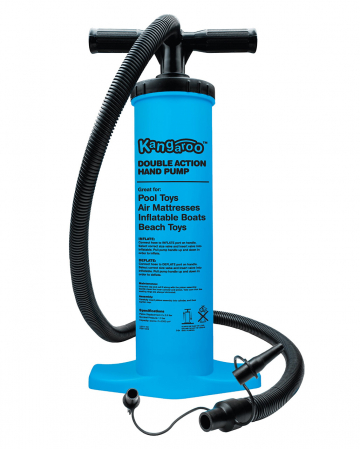 If not, make sure to adjust it to achieve the correct position.
If not, make sure to adjust it to achieve the correct position.
After the initial pump, simply continue the process until reaching the proper pressure and blow up the tire.
Step 4. Return the dust cap
Put back the dust cap to the tip of the valve.
Cover the tip until there is no more space between the tip of the dust cap and the bicycle valve.
Third Method: DIY PumpingIf you have no pump but some tools and equipment in your vicinity, a DIY pumping method may suffice.
What you will need
Steps on DIY Pumping
Step 1. Remove the dust cap
Step 2. Connect your valve adaptor to the pressurized air source
This step requires thinking because an air leakage must be avoided. Make sure that the adaptor is an exact interface to the mouth of the pressurized air source container.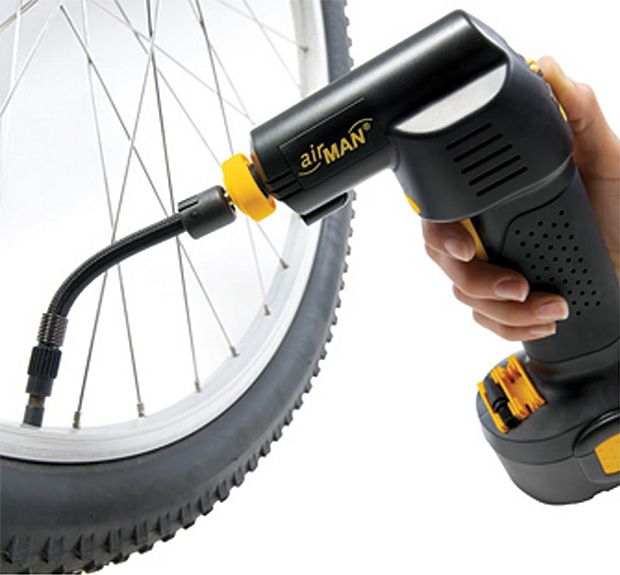
Step 3. Connect the valve adaptor to the tire valve
If the adaptor is placed correctly, the air transfer will start. Continue putting air into the tire until the desired tire pressure is obtained or the pressurized air source is depleted.
Step 4. Remove the valve adaptor the tire valve
Carefully remove the valve adaptor. It is important to make sure the removal process clamps the tire valve seal to avoid air leakage.
Step 5. Return the dust cap
Cover the tip until there is no more space between the tip of the dust cap and the bicycle valve.
ConclusionThe most common methods on how to pump a bike tire without a pump are described in this article. Follow the steps carefully not to blow up a bike tire.
Follow the steps carefully not to blow up a bike tire.
If you understand the different methods to inflate a bike tire without a pump and the steps for each method that are explained in this article, you can bike wherever without a problem. Do you find the article helpful? Feel free to share the article with those who need the guide.
Gary Johnson
“I ride my bike to work for years, but is that enough? Our carelessness towards our surroundings has taken a toll on the environment. And now, everyone is responsible for changes; even the most minor contribution is counted. With this hope and spirit, I started with my partner to establish Biketoworkday to help more individuals commute to their work sites on their bikes.”
Bikeshepherd.org is reader-supported. When you buy through links on our site, we may earn an affiliate commission. Learn more
by Patrick Wise
A cyclist or a biker for that matter needs to be alert and prepared in case of emergencies on the road.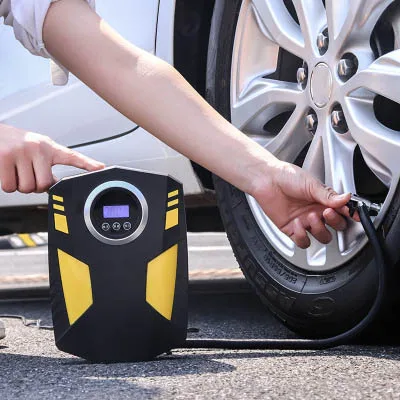 As a bike enthusiast myself, I have been looking for ways to learn different skills that will be useful if any problems arise during the ride. One skill that I have developed over the years is how to put air in bike tires without a pump.
As a bike enthusiast myself, I have been looking for ways to learn different skills that will be useful if any problems arise during the ride. One skill that I have developed over the years is how to put air in bike tires without a pump.
This is a skill that will be helpful if and when you accidentally forgot your pump when doing any biking activities. Also, if you do not own a portable pump right now, then learning some of the methods below will certainly help you as a biker. However, please be reminded that most of the process requires some do-it-yourself skills and a little know-how. Please be guided accordingly.
Contents
Putting the right amount of air in your tire is important in terms of your safety and getting the best performance of your bike. Having it inflated with the right amount of air will also increase the lifespan of your tire than what is expected.
Having it inflated with the right amount of air will also increase the lifespan of your tire than what is expected.
But what if you need a pump in the middle of the ride and you do not have one in your position? You need to use one of the methods below to make your tire inflated properly:
Using C02 CartridgesThis method is arguably the most popular alternative to inflating your bike’s tire without using a pump. The best thing about C02 is it’s portable, comes in small size, and light which makes it easy to bring when biking.
But please take note that this is just a temporary solution to inflating your tire and should be used only for emergencies. The best way to inflate is still to look for a regular pump to put air in your tire. Here are the steps when inflating your tire with a C02 cartridge.
Step 1: Removing the Cap
The first thing to do is remove the cap of the cartridge. The right way to do it to turn the cap counterclockwise using your bare hands. Retrieve the inflator fitting and the cartridge from the tube by tipping the other side of the inflator up.
Retrieve the inflator fitting and the cartridge from the tube by tipping the other side of the inflator up.
Step 2: Check your Tire
After opening the cap, you may proceed to check your tire if it is flat or not. You also need to check the tube if it is in good condition. Otherwise, if it is broken, you might end up with another flat tire just a few seconds of putting air into it. You can also adjust the tire so that it is position properly on the rim before putting the air.
Step 3: Filling the Tire with Air
Put the C02 cartridge into the inflator fitting by inserting it with your hand and pushing it clockwise until you will hear and notice an airflow. Hold it for a few seconds depending on the size of your tire. If the inflation level is enough, turn the cartridge counterclockwise to stop the air from flowing.
Step 4: Removing the Cartridge from the Inflator Fitting
Remove the cartridge off the valve by unscrewing it from the inflator fitting. Close the nozzle while pulling the nozzle away from the valve. The right way to do it is to pull it straight to avoid damaging the inflator tube of your tire.
Close the nozzle while pulling the nozzle away from the valve. The right way to do it is to pull it straight to avoid damaging the inflator tube of your tire.
Step 5: Replacing the C02 with Regular Air
The C02 is just a temporary remedy and should be replaced immediately as soon as there is a regular pump that is available. Since C02 disappears quickly, replacing it with normal air should be your priority.
Manually Inflating the TireIt may not be the most popular way but if there is no other option, putting air to the tire manually is another way to do it. It may require a lot of effort on your part but this method can be done. But first thing first, you need to clean the tire and the valve before doing this method. Any piece of cloth can be used to clean the tire and the valve but make sure to clean it completely.
Once the tire and the valve are clean, begin the inflation process by blowing some air into the tire. After putting in some air, check the tire if it is aligned with the rim. If it is not, make sure to make the necessary adjustments to make it in the right position. After that, continue to blow into the valve until you put enough air into the tire.
If it is not, make sure to make the necessary adjustments to make it in the right position. After that, continue to blow into the valve until you put enough air into the tire.
For sure, this method will take time and need you to exert a lot of effort. But to be able to succeed, do not be discouraged. From time to time, check the alignment of the tire and the rim and adjust accordingly.
Make a DIY Inflating ToolThis method requires a lot of creativity and imagination on your part. Inflating a tire can be done without using a pump by using an inflating tool that is made by you. This method requires some Do-It-Yourself skills and your creativity to pull it off. To inflate the tire using this tool, you will need to transfer the air from one tire to the other.
In making the inflating tool, you will need a siphon hose which will be used to transfer the gas to the tire. Then, get a pair of Schrader valves which will be attached to both sides of the hose. One valve must be a clip-on variety so that it can be attached to another side of the tire while you do the inflation process. Insert the two valves at both ends of the hose and secure it with a clamp to prevent it from detaching.
One valve must be a clip-on variety so that it can be attached to another side of the tire while you do the inflation process. Insert the two valves at both ends of the hose and secure it with a clamp to prevent it from detaching.
So, how do you pump a bike tire without a pump through this method? You can attach the other side of the hose to the other tire of your bicycle with air and transfer the air to the one that needs inflation. Another way is to get the air from tires from other bicycles. All you need is some PR skills to do the trick.
Learning how to put air in bike tires without a pump is a much-needed skill to have as a biker. It will be a big help during emergencies, especially during your bike riding activities. The most important thing is to keep your tire with enough air all the time for your safety and to make your tire last longer than expected.
Categories Gears & MaintenanceCopyright © Bike Shepherd 2022
 ru
ru There is such a situation: a flat tire, but there is no one and nothing nearby, and the wax does not have a compressor in the car. In such a situation, the motorist will be delighted even with a bicycle pump. Like an exhausted traveler in the desert - a mug of water. Stop lamenting, it's better to read this article and find out how to pump up a wheel without a pump, since there are methods. Here are just some of these methods - sheer myths, and some we do not recommend you practice because of the huge harm to health, and even life.
So, in the city, almost any other driver will help you out, and you can buy a pump in the store, for that matter. Numerous trucks and trucks drive along the highway, the drivers of which also often help their colleagues. Large trucks have pneumatic brakes - they will become the source of air for the wheel of your car. A thrifty driver almost always carries a hose with him, with the help of which clean air under high pressure can be supplied from the braking system to the wheel.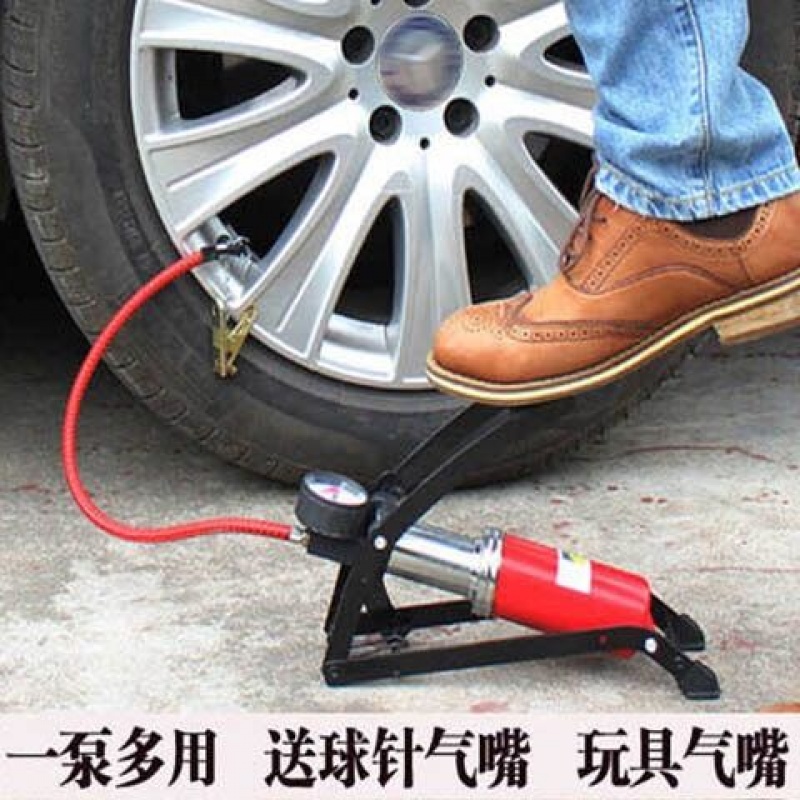
You can also take the wheel on a ride or bus to the gas station, where it is often possible to check the pressure and pump up to the standard. In the absence of all these possibilities, you need to read the material further - here are the methods that will be offered: Connecting it to the nipple is not particularly difficult. The main thing is that the substance in the container cannot dissolve the rubber. The ideal thing here would be to inflate the wheel from a can of compressed air - they are usually blown through office equipment. Everything is fine, but the wheel needs 20-25 liters of such air, which is equivalent to several boxes of spray cans. In general, specifically “computer” compressed air is not suitable for us, other cartridges - maybe we need to figure it out in detail.
2. An explosion of gasoline vapors in the wheel really helps, but not in everything. If you need to throw the bead ring over the hump - this is one thing, but pumping up the wheel is completely different.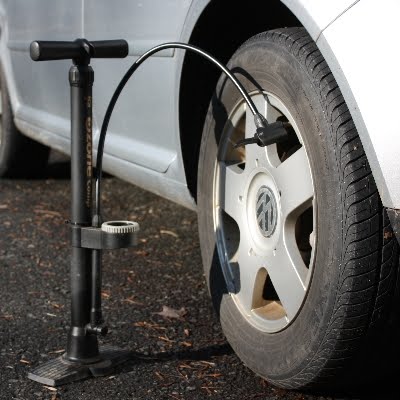 Please note that in many online videos it is recommended to first unscrew the spool - I wonder why this is? It has been experimentally found that pumping wheels with an explosion helps to increase the pressure by only 0.2 bar. In general, this method does not suit us either.
Please note that in many online videos it is recommended to first unscrew the spool - I wonder why this is? It has been experimentally found that pumping wheels with an explosion helps to increase the pressure by only 0.2 bar. In general, this method does not suit us either.
3. Fire extinguisher - this solution clearly claims to be unusual. However, even a six-kilogram cylinder with the spool turned out helped increase the pressure by only the same 0.2 bar as in the previous paragraph.
4. Turbocharger - here a hose is connected to the air path after the turbocharger. However, between the compressor and the intake valves, the inflatable pressure in the line is low for pumping the wheels, and even gasping is useless here. This refers to a regular turbocharged car, not a sports car.
5. Exhaust system - here it is important to be able to attach a hose to the exhaust pipe in such a way that the exhaust goes all into it. Then the pressure will be enough to fill the wheel, and not even one. When the exhaust system is tight, then, by giving gas, you can actually normalize the pressure in the tire. But we will immediately warn about the dangers of such an idea for a catalytic converter and even corrugated elements.
Then the pressure will be enough to fill the wheel, and not even one. When the exhaust system is tight, then, by giving gas, you can actually normalize the pressure in the tire. But we will immediately warn about the dangers of such an idea for a catalytic converter and even corrugated elements.
6. Other wheels - of these, a certain percentage of air can also be transferred through the hose. But you have to mess around too much, because the valve mechanism will interfere with your aspirations in every possible way. Turning out the spools, you run the risk of flattening a few more wheels. Suppose you succeeded, but then the lack of pressure in the remaining wheels is guaranteed. At best, 75% of the norm will remain there.
Here you must first assemble a hose with two tips, like compressors. Then the whole idea still has the right to be implemented.
In general, all these non-traditional methods are best performed by trained and knowledgeable people.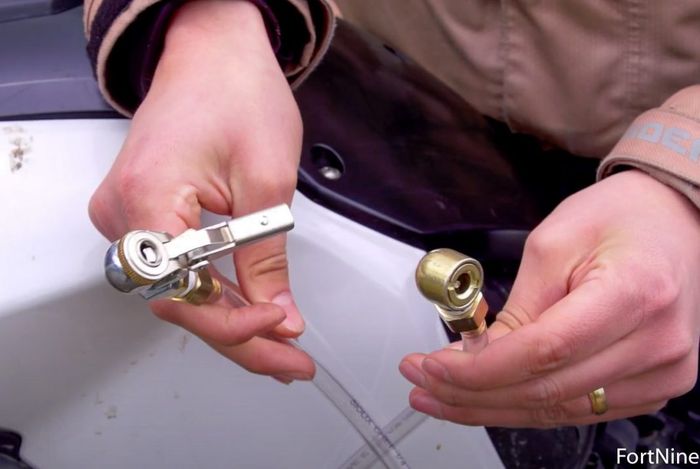 You don't want to hurt your car and yourself even more than a flat tire, do you? Therefore, the only correct solution is to check the pump in the car.
You don't want to hurt your car and yourself even more than a flat tire, do you? Therefore, the only correct solution is to check the pump in the car.
Total 4
Good rating Bad rating
Content of Article
Good afternoon everyone! Every motorist knows about the so-called motorist kit, which must include a compressor, that is, a pump. But sometimes situations arise when you have to look for alternative options for how to pump up a wheel without a pump.
I will say right away that it is not recommended to allow such situations. Only a full-fledged car pump can restore a disassembled wheel, restore the necessary pressure to it and drive further by car at normal speed.
Today we will learn about the methods used in the field and at home. They are suitable if you need to pump up the tires of a stroller or a bike. For a bicycle, pumping from a ball gives an excellent result. But for a car, and even more so for pumping on a truck, there is a big doubt about the effectiveness of these methods.
Some car enthusiasts recommend using aerosol cans to inflate a flat tire. Connecting them to the tire nipple is not so difficult.
Here it must be taken into account that often the internal pressure in such cartridges is from 1.8 to 2.8 bar. How much or how little this is depends on the specific wheel that needs pumping. When choosing an aerosol, consider the contents of this can, its composition. Some substances can corrode rubber or harden. That is, the option using building foam is unlikely to work. Only in the most extreme case, when the wheel will be sent to a landfill at the place of arrival.
Some substances can corrode rubber or harden. That is, the option using building foam is unlikely to work. Only in the most extreme case, when the wheel will be sent to a landfill at the place of arrival.
Most effective from canisters that are used for purge. They are filled with compressed air.
But understand one simple thing here. The internal volume of a car wheel is approximately 20-25 liters. Yes, with the help of compressed air in cylinders, in theory, you can pump up a wheel without a pressure gauge and a compressor. But then you have to spend a few boxes of spray cans.
Next in line is the use of the brake system from your own car.
With its help, it will definitely not be possible to quickly pump up a tire.
The meaning is as follows. It is required to connect the valve from the tire to the fitting of the brake master cylinder on the vehicle. Before doing this, be sure to empty the brake fluid reservoir itself. Then the driver needs to start actively pressing the brake pedal to the floor, release it and repeat these gestures. Similarly, the brake is pumped when the brake fluid is changed. Just get ready for the fact that such a swap will take a whole lot of time and a huge amount of effort.
Then the driver needs to start actively pressing the brake pedal to the floor, release it and repeat these gestures. Similarly, the brake is pumped when the brake fluid is changed. Just get ready for the fact that such a swap will take a whole lot of time and a huge amount of effort.
Acceptability of this method is quite low. Although in terms of safety and efficiency, this is one of the best options when a compressor or hand pump is not available.
Relevant for those who have a turbocharger installed in their car.
Turbocharged cars are quite common, so it would be right to talk about this method.
The trick here is to connect the hose to the air path directly after the turbocharger. But here, too, there is a catch. In theory, there is pressure between the compressor and the intake valves, and quite high. But these values \u200b\u200bare still not enough on ordinary cars to provide wheel inflation. No matter how much you press the gas pedal, the pressure inside the tire will not increase.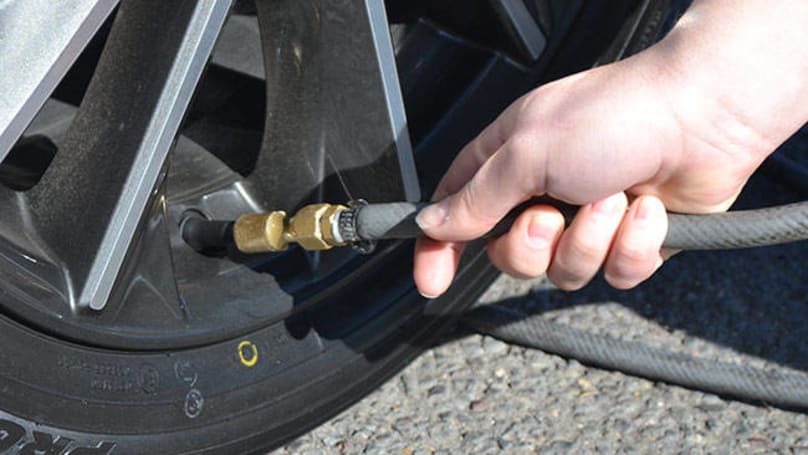 You can get some air in there.
You can get some air in there.
But still, you can't call it a full-fledged pump.
An exception may be sports cars, where there is a really powerful turbocharger. Then there are chances.
There are many videos on the net showing how desperate car enthusiasts, otherwise you can’t call them, inflate car tires without a hose.
They do it with gasoline. Here you will need to unscrew the spool on the valve. Otherwise, the wheel will simply break. The point is to pour a small amount of gasoline into the tire, then set it on fire. When a fiery torch is brought up, the fuel ignites, a lot of pressure appears, which, in theory, should pump up the wheel. But this is just a theory. In practice, things are much worse.
The use of pumping fuel is not recommended. This is extremely dangerous and ineffective. So here it’s better to just watch a video about this method, but in no case do experiments on your own.
When choosing a car fire extinguisher, few drivers thought about using this device for tire inflation.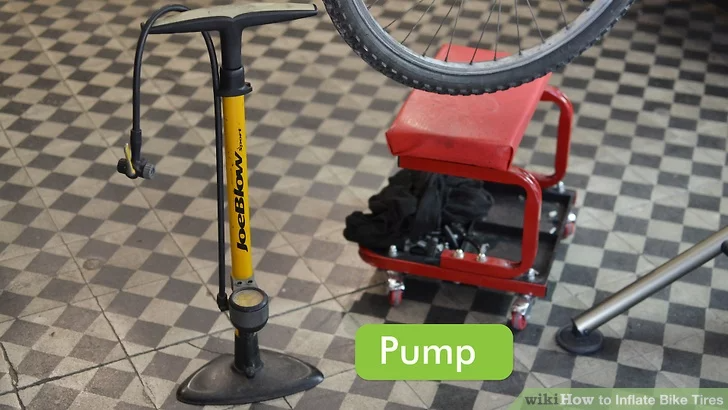
Quite an unusual method that has the right to exist. Numerous experiments with standard 6 kg fire extinguishers gave disappointing results. With their help, it was possible to raise the pressure literally by 0.2-0.5 bar. And this despite the fact that the spool was previously unscrewed.
If most of the methods presented here work on a bicycle, but are unlikely to help much on a car, then the next option is a little different.
Here you will need to connect the hose to the exhaust pipe and the wheel. The engine can indeed create the necessary pressure inside the sealed system, that is, the tires of the car. Just enough to work the gas pedal properly.
However, this method is recommended only as a last resort. Otherwise, you risk damaging the catalyst, or the exhaust gas system. Eliminating the consequences will be very expensive.
And in the end it turns out that it is possible to inflate the wheel without using a compressor or a conventional hand pump.